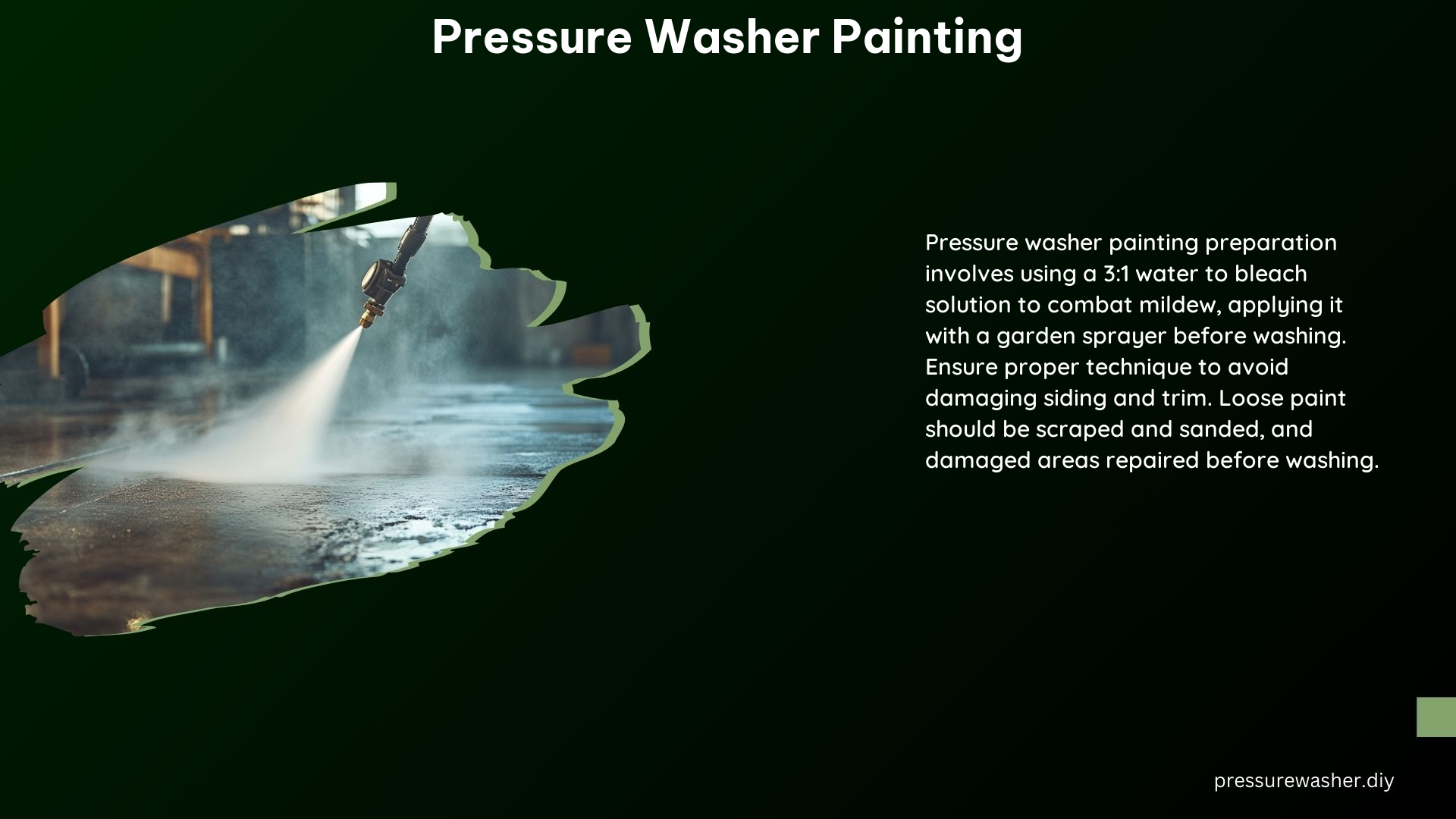Pressure Washer Painting, also known as pressure washer as paint sprayer, involves using a high-powered pressure washer to prepare surfaces for painting by removing dirt, mildew, and loose paint. This comprehensive guide will provide you with the technical specifications, safety precautions, and step-by-step instructions to ensure a successful and efficient pressure washing process before painting.
Preparation and Safety
Before starting the pressure washing process, it’s crucial to take the necessary safety precautions and prepare the surface properly.
Bleach Solution
To combat mildew, a 3-to-1 water-to-bleach solution can be applied to the surface. This solution should be allowed to sit for 15-20 minutes before pressure washing to effectively kill and remove any existing mildew.
Protective Gear
When working with a bleach solution and a high-pressure water stream, it’s essential to wear the appropriate protective gear. This includes long sleeves, pants, a respirator, and rubber gloves to protect against skin irritation and exposure to the bleach mist.
Test Area
Begin the pressure washing process in a less noticeable area of the surface, such as a corner or a small section, to test the surface’s response to the pressure and ensure that no damage occurs.
Pressure Washer Settings

The settings on your pressure washer can significantly impact the effectiveness and safety of the surface preparation process.
PSI (Pounds per Square Inch)
The recommended PSI for effective paint removal varies, but generally, a lower PSI (around 1,000-1,500) is recommended to avoid damaging the surface. Higher PSI settings can potentially cause surface damage, such as gouging or chipping, especially on softer materials like wood or vinyl siding.
Spray Position
When pressure washing, hold the nozzle at a 45-degree angle and maintain a distance of 12-18 inches from the surface. This angle and distance help to effectively remove dirt and loose paint without causing damage to the underlying substrate.
Painting Process
After the surface has been properly prepared using the pressure washer, the next step is to complete the painting process.
Scraping and Sanding
Any remaining loose or flaking paint should be removed through scraping and sanding. This step ensures a smooth, even surface for the new paint to adhere to.
Priming
Once the surface has been thoroughly cleaned and any loose paint has been removed, apply a primer to the area. This primer will help the new paint to bond securely to the surface.
Paint Application
After the primer has been allowed to dry completely, apply the new paint to the prepared surface. Follow the manufacturer’s instructions for the best results.
Additional Tips
While pressure washing can be an effective way to prepare a surface for painting, it’s important to be mindful of certain considerations.
Avoid Over-Washing
Pressure washers are not intended to be used as paint removers. Excessive pressure can damage the surface, so it’s crucial to avoid using too much pressure during the cleaning process.
Check for Leaks
During the pressure washing process, ensure that water is not entering the walls or other areas of the structure. This can lead to water damage and mold growth if left unaddressed.
Technical Specifications
To ensure a successful and efficient pressure washing process, it’s important to choose the right equipment and accessories.
Pressure Washer
Select a pressure washer with adjustable PSI settings and a wide range of nozzles to accommodate different surface types and cleaning needs. Look for models with a minimum of 1,000 PSI and a flow rate of at least 1.3 gallons per minute (GPM).
Hose Attachments
Utilize hose attachments, such as lances and extension wands, to improve control and reach during the pressure washing process. These accessories can help you access hard-to-reach areas and maintain the proper spray angle.
Cleaning Solutions
Use a garden sprayer to apply cleaning solutions, such as the bleach-water mixture, to the surface before pressure washing. Be mindful of overspray and run-off, and take appropriate measures to protect nearby plants and surfaces.
References
- How to Pressure Wash a House
- Pressure Washing Before Painting: Necessary or Not?
- The Art of Pressure Washing
- Pressure Washing Techniques for Painting
- How and Why to Pressure Wash Before Painting Your House
By following the technical specifications and safety guidelines outlined in this comprehensive guide, you can ensure a successful and efficient pressure washing process before painting, resulting in a flawless and long-lasting finish.
